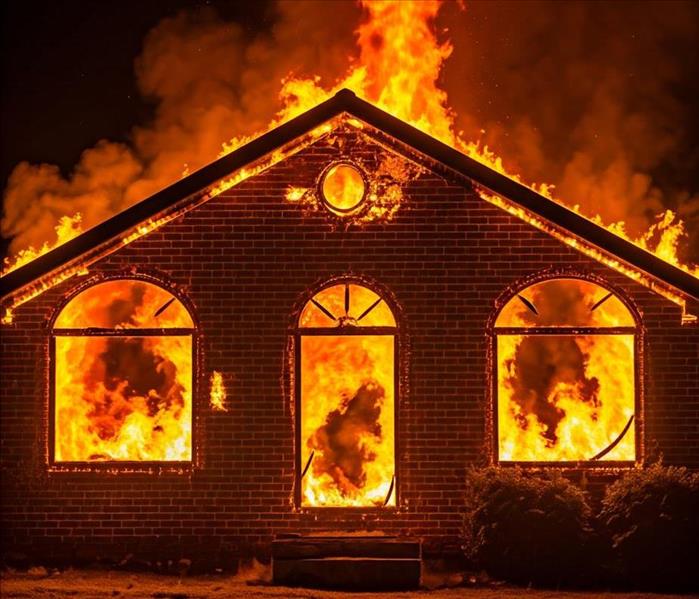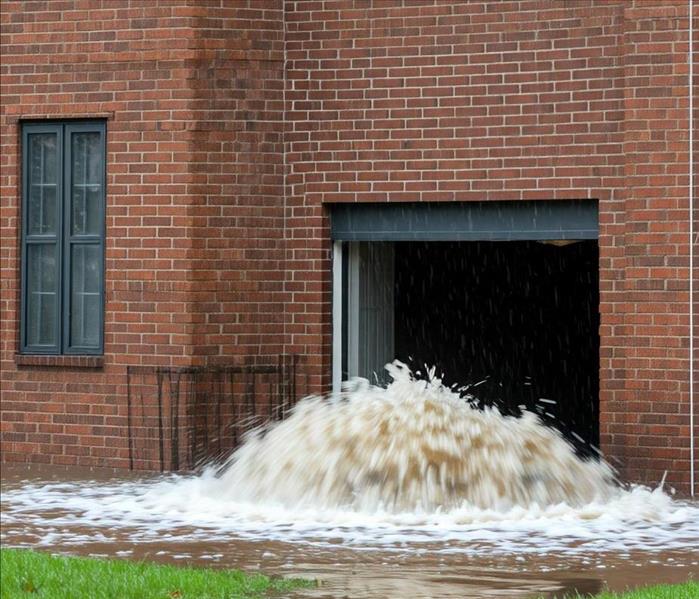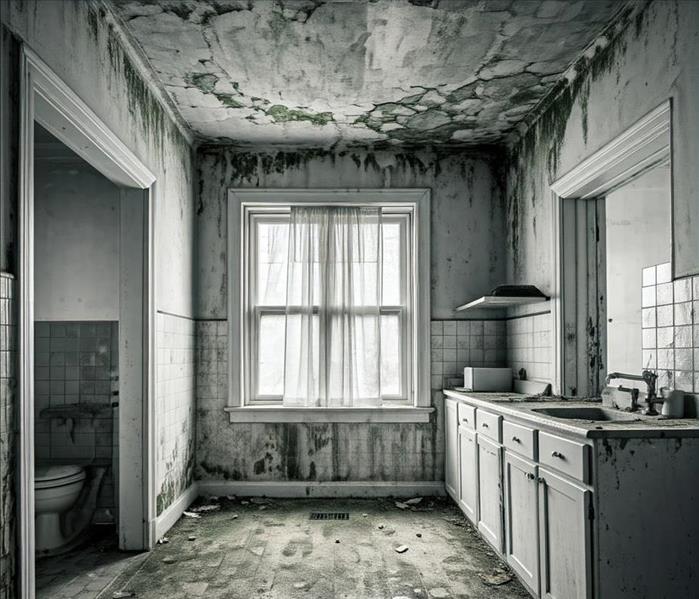Recent Posts
How to Avoid Fire Damage to Your Home During Dry Seasons
1/20/2025 (Permalink)
Dry seasons can be a dangerous time for home fires. The combination of dry weather, strong winds, and low humidity can create the perfect conditions for wildfires to spread quickly. In addition, many people use fireplaces and other heating sources more often during the dry season, which can also increase the risk of fire.
There are a number of things you can do to protect your home from fire damage during the dry season.
Here are some tips:
- Create a defensible space around your home. This means removing any flammable materials, such as leaves, branches, and mulch, from within 30 feet of your home.
- Keep your gutters clean. Clogged gutters can collect leaves and other debris, which can increase the risk of fire.
- Trim trees and shrubs near your home. This will help to reduce the risk of fire spreading to your home.
- Use caution when using fire in or around your home. This includes being careful when using fireplaces, campfires, and grills.
- Install and maintain smoke detectors and carbon monoxide detectors. These devices can help you to evacuate your home safely in the event of a fire.
- Have a fire escape plan. This will help you and your family to get out of your home safely in the event of a fire.
- Consider installing a sprinkler system. Sprinkler systems can help to extinguish fires quickly, which can reduce the amount of damage to your home.
- Be aware of fire restrictions. During the dry season, there may be restrictions on outdoor burning. Be sure to check with your local fire department before burning anything outdoors.
By following these tips, you can help to protect your home from fire damage during the dry season.
Additional tips:
- Sign up for a fire safety course. This will teach you how to prevent fires and how to escape from a fire safely.
- Install a home security system. This can help to deter burglars, who may be more likely to target homes during the dry season.
- Keep your home well-maintained. This includes repairing any leaks or other damage to your home.
- Be prepared to evacuate. If a fire threatens your home, be prepared to evacuate safely.
By following these tips, you can help to keep your home safe during the dry season.
How to Keep Your House Water Damage Free from Heavy Rains
1/20/2025 (Permalink)
Sure, here is a blog post on how to keep your house water damage free from heavy rains:
How to Keep Your House Water Damage Free from Heavy Rains
Heavy rains can cause a number of problems for your home, including flooding, water damage, and mold growth. By taking a few simple steps, you can help to protect your home from water damage.
Here are some tips:
Clean your gutters and downspouts regularly. This will help to ensure that water can drain away from your home properly.
Grade your yard so that water drains away from your home. This will help to prevent water from pooling around your foundation.
Install a sump pump in your basement. This will help to remove any water that does enter your basement.
Seal any cracks or holes in your foundation. This will help to prevent water from entering your home.
Install storm windows and doors. This will help to keep water out of your home.
Use waterproof materials in your basement. This will help to protect your basement from water damage.
Be prepared to evacuate if necessary. If you live in an area that is prone to flooding, you may need to evacuate your home during heavy rains.
By following these tips, you can help to keep your home water damage free from heavy rains.
Additional tips:
- Monitor the weather forecast. This will help you to be prepared for heavy rains.
- Have a plan in place in case of flooding. This will help you to know what to do if your home is flooded.
- Call a professional if you have any concerns about water damage. A professional can help to assess the damage and make repairs.
How Mold Can Grow from Water Damage and How You Need to Get Tested for Removal
1/20/2025 (Permalink)
Mold is a type of fungus that can grow in damp conditions. It can be a serious problem in homes that have been damaged by water, such as from flooding, leaky pipes, or sewage backups.
Mold can grow on a variety of surfaces, including walls, ceilings, floors, and furniture. It can also grow in hidden places, such as behind walls and under floors.
If you suspect mold in your home, it is important to have it tested by a professional. Mold testing can help to determine the type of mold present and the extent of the problem.
Once you know you have mold, it is important to have it removed by a professional. Mold removal can be dangerous, and it is important to have it done by someone who knows what they are doing.
Here are some tips for preventing mold growth in your home:
- Clean up spills and leaks promptly.
- Fix any plumbing problems promptly.
- Use a dehumidifier to remove excess moisture from the air.
- Improve ventilation in your home.
- Keep your home clean and dry.
If you have any questions about mold or mold removal, please contact SERVPRO. We are experts in mold remediation and can help you get your home back to normal.
Additional tips for preventing mold growth:
- Inspect your home regularly for signs of mold.
- Keep your gutters and downspouts clean.
- Trim trees and shrubs away from your home.
- Use a dehumidifier in your basement.
- Install a sump pump in your basement.
By following these tips, you can help prevent mold growth in your home and keep your family safe and healthy.
Containment Barriers
2/11/2024 (Permalink)
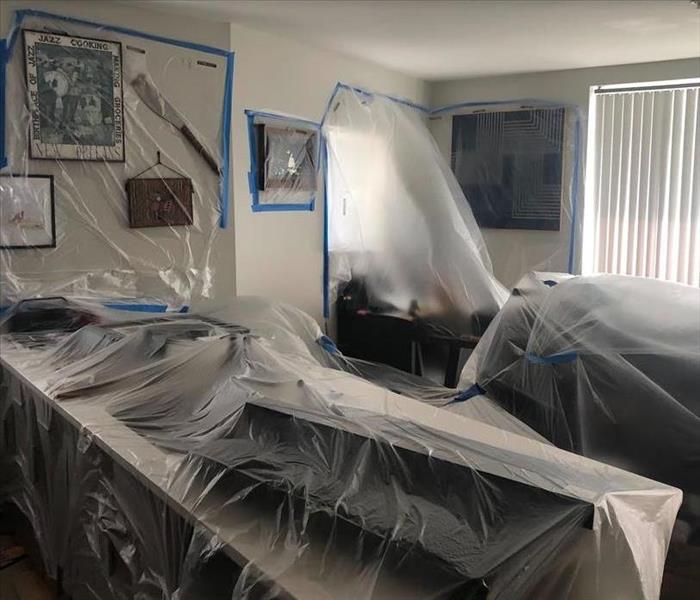 In addition to protecting valuable items, containment barriers are often incorporated to aid in the drying process.
In addition to protecting valuable items, containment barriers are often incorporated to aid in the drying process.
Why call the experts? Because there’s a science behind what we do.
In addition to protecting your valuable materials from dust and harmful particles, Containment Barriers can aid in the drying process and help eliminate problems resulting from inadequate drying techniques.
Containment barriers can play a crucial role in the drying process. These barriers are necessary for preventing the diffusion of water and ensuring effective control of moisture. By incorporating these barriers into the drying process, the drying efficiency and effectiveness can be significantly improved.
Here at SERVPRO Team Cuthbertson, we are passionate about education and the science in what we do. Our industry-leading teams are on call and ready to handle any size loss.
SERVPRO TEAM CUTHBERTSON
ALWAYS LEARNING, ALWAYS GROWING, ALWAYS READY
Not just Fire; Smoke and Soot too.
2/11/2024 (Permalink)
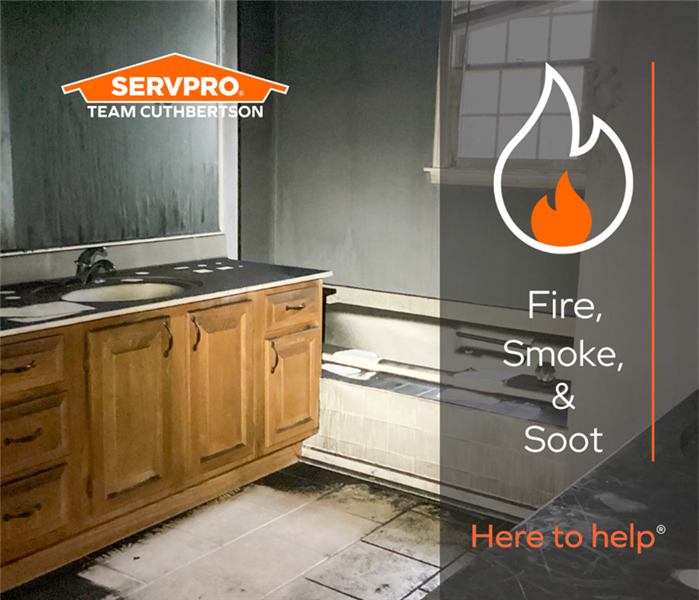 Smoke and soot can travel far distances and infiltrate even the tiniest cracks and crevices.
Smoke and soot can travel far distances and infiltrate even the tiniest cracks and crevices.
When a fire occurs, the consequences can be catastrophic. While some areas and belongings may be directly impacted by the fire, there are other items that may not have been in the vicitity of the flames, and reamaind unscorched. However, smoke and soot have the ability to travel and infiltrate different surfaces and objects within a building, impacting not only the room but also the items in them, sometimes even when the room is located on the opposite side of the building. This can happen due to the spread of smoke particles and soot particles, which can reach far distances within a building. These particles are so small that they can easily enter even the tiniest cracks and settle on walls, furniture, and personal belongings.
SERVPRO is equipped with specialized equipment and techniques that can effectively remove the residue of smoke and soot that lingers following a fire and make it, "Like it never even happened."
Signs of Mold
2/8/2024 (Permalink)
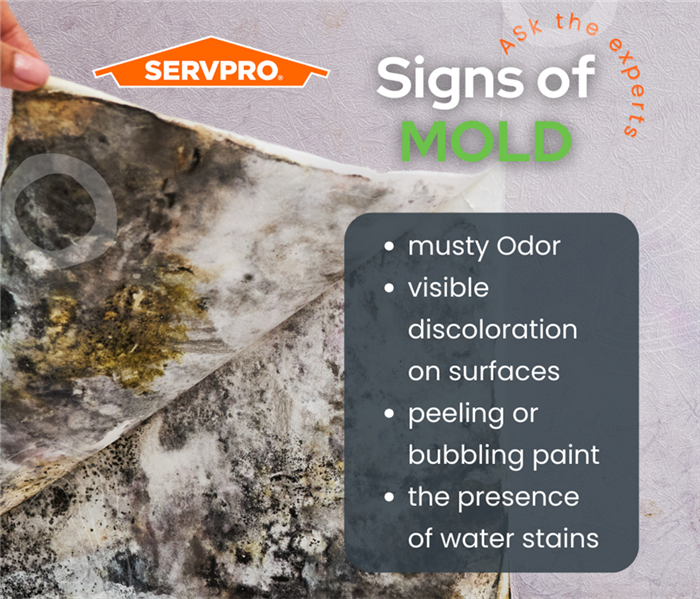 Here are a few signs that you might have mold growth.
Here are a few signs that you might have mold growth.
Are you at risk of mold resulting from recent water damage?
When water damage occurs, it is crucial to address the issue promptly. Water damage can lead to the growth and spread of mold in various areas of a building. Mold thrives in moist environments and can quickly develop after a water leak or flood. It can be found on walls, ceilings, floors, and even in hidden places such as behind wallpaper or inside insulation.
Here are a few of the signs that indicate the presence of mold resulting from water damage: a musty odor, visible discoloration on surfaces, peeling or bubbling paint, and the presence of water stains. If you notice any of these signs, it is essential to take immediate action to identify and address the source of the water damage and remove the mold.
SERVPRO Partners With The University of Florida
2/21/2023 (Permalink)
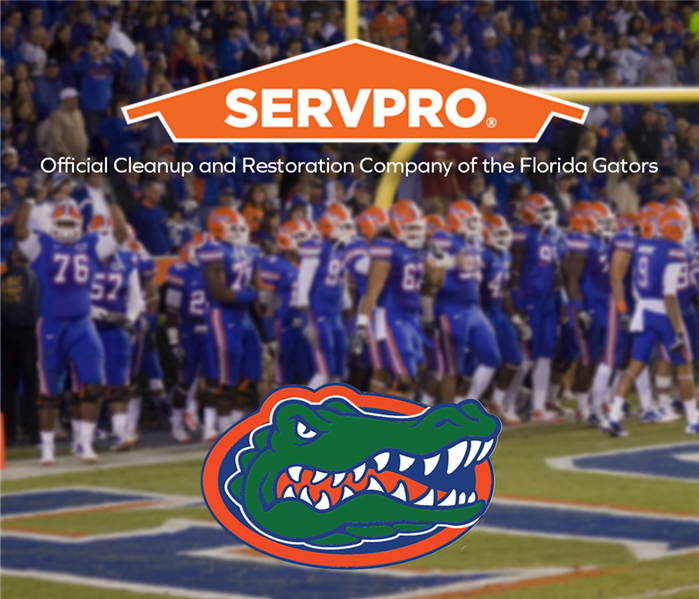 This new agreement marks a significant milestone in SERVPRO's commitment to supporting collegiate sports and the Florida Gators!
This new agreement marks a significant milestone in SERVPRO's commitment to supporting collegiate sports and the Florida Gators!
SERVPRO proudly announces its continued partnership with Florida Gators athletics for the 2023-24 athletic season. This new agreement marks a significant milestone in SERVPRO's commitment to supporting collegiate sports and the Florida Gators' commitment to providing successful and memorable experiences for their fans.
Through this agreement, SERVPRO and its franchises will continue to provide a wide range of services, such as on-site cleaning, restoration, and management solutions for all of the Gators' athletic venues. The company will also provide additional support through marketing initiatives and sponsorships. This relationship is a testament to both parties' dedication to delivering excellent service and creating memorable experiences for everyone involved.
The Impact of Hurricanes on Lake Mary, Florida
1/24/2023 (Permalink)
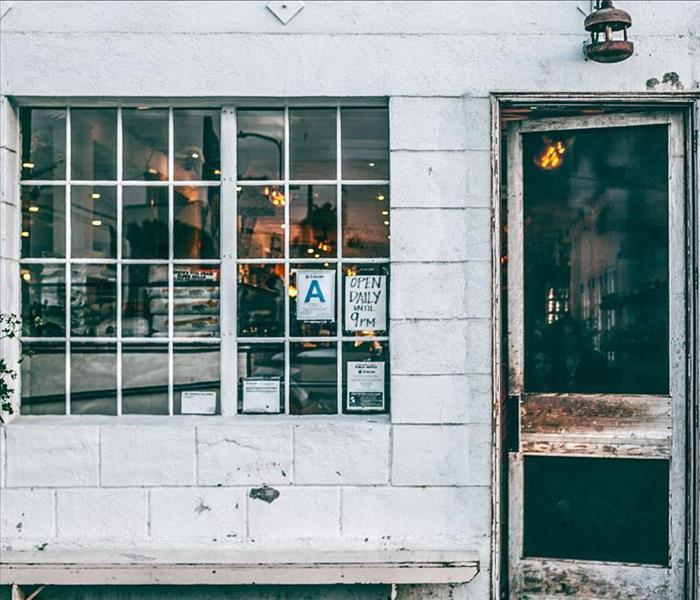 This is a photo that shows what water damage on a business can look like in Lake Mary, Heathrow, Florida.
This is a photo that shows what water damage on a business can look like in Lake Mary, Heathrow, Florida.
Hurricane Preparedness for property owners in Lake Mary
On September 28, Category 4 Hurricane Ian made landfall in Florida. Our SERVPRO team in other states got ready to go to Florida as Floridians began to evacuate. Vehicles from our teams across the nation were ready to stand by property owners' sides and provide assistance to any Hurricane damage in Lake Mary when needed.
Overview of Hurricane Damage in Lake Mary
Our team in restoration team in Lake Mary helped local residents and businesses with storm damage. Businesses in Lake Mary were boarded up for days and some even a week. To reopen and operate as soon as possible, our teams were working day and night to ensure that we can get a business open.
Right next door to us in Lake Mary we have Sanford. Sanford had flooding for over a month and didn't recede until a month after Hurricane Ian. There was a famous pizza shop in Historic Downtown Sanford that was anticipating opening every weekend, unfortunately, that pizza shop could not make it through the closure.
Right after our teams got back to normal operations, Hurricane Nicole was lurking in the ocean. Luckily there was not too much damage but there were some vulnerable moments from the first hurricane. We went from having water damage to mold damage due to unknown water intrusion in homes in Lake Mary, Florida.
Identifying Mold
12/5/2022 (Permalink)
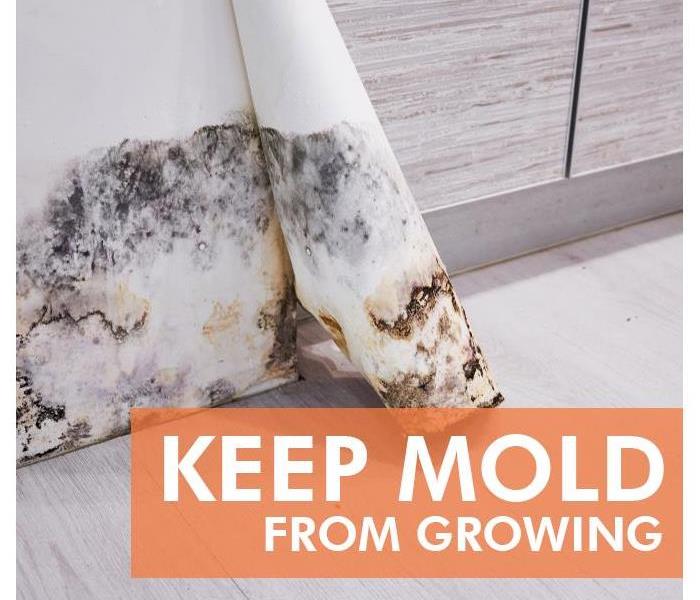 If you need mold remediation call SERVPRO of Lake Mary/ Heathrow.
If you need mold remediation call SERVPRO of Lake Mary/ Heathrow.
Identifying Mold
If you see mold or mildew in your Lake Mary, FL home, it's important that you identify it correctly. Mold can look very similar to mildew and the two types of fungus may be difficult to tell apart. But knowing what each looks like will help you decide whether or not you need to call in a professional remediation team.
Appearance of Mold
Mold can be white, black, green, yellow or any other color. It also comes in powdery and slimy forms. However, mold is typically a white or gray color, and it can be found in the same places as mildew. However, there are some key differences between these two organisms. The main difference is that mildew is usually powdery and can be found in whites, blues, grays, or greens. People who are allergic to mold may also experience an allergic reaction from mildew spores.
Mildew has many different names because of its appearance and ability to grow on different types of materials; "sugar fungus" is one common name for this organism because it grows on sugary substances such as bread or fruit juice.
Signs of Mold vs. Mildew
This is one way to tell them apart. Mold stains are usually black or brown, while mildew stains are usually white or gray. If you're not sure what kind of stain your house has, take out some colored permanent markers and test them on an inconspicuous place (not the ceiling). If it's mold, the color will turn dark almost immediately; if it's mildew, it will remain light after several minutes.
The problem with this method is that sometimes mold won't leave any noticeable stains; in those cases, we look for other signs.
Where Mold Grows
Mold may be present in and on walls, soft surface items like couches or mattresses, hard surfaces like wood or tile, and outside of the home on vinyl siding or window frames. It can also grow on hard surfaces like wood or tile. Mold can even be present outside of your Lake Mary, FL home on items such as vinyl siding or window frames that aren’t properly maintained.
Drying out a room after mildew growth to prevent further growth should be relatively easy. However, mold growth needs to be professionally cleaned up based on the type of mold and the material affected by it. Mold grows in many different places, making it difficult to identify. Mold can be visible or hidden, and its growth needs to be professionally cleaned up based on the type of mold and material affected by it.
Call the Professionals
If you suspect a mold problem, the first step is to determine what type of fungus you have. Fungi can be identified by sight and smell. For example, if you see discoloration on a surface or smell an earthy odor in your home, chances are that there's some kind of fungus growing there. But what kind?
However, it's important to note that mold and mildew aren't the same things: while both cause similar symptoms (such as black spots), they're caused by different types of fungi. Knowing which kind is growing in your home will help you figure out how serious the issue may be and whether or not it requires professional remediation services from a licensed company like us at All Pro Restoration Services!
If you have mold in your Lake Mary, FL home and need help identifying it, SERVPRO of Lake Mary/Heathrow our team is here to help.
Three Types of Contaminated Water
11/7/2022 (Permalink)
 There are three types or categories of water: clean water, contaminated water, and sewer/flood water.
There are three types or categories of water: clean water, contaminated water, and sewer/flood water.
Three Types of Contaminated Water
There are three types or categories of water: clean water, contaminated water, and sewer/flood water. They each fall into categories, (1, 2, and 3 respectively). Each is unique in the source and the way in which it needs to be mitigated.
Clean Water (Category 1)
Clean water is from a clean source and is not contaminated. It can be used for drinking, bathing, and laundry. Clean water is usually clear and odorless. This kind of water can come from an overflowing bathtub or something similar. This type of water does not require any sort of special care outside of the normal mitigation process.
Contaminated Water (Category 2)
A contaminated water supply is usually caused by a break in the system when your water supply is interrupted. Leaking or burst pipes can also contaminate your water supply, as well as overflowing toilets and broken washing machines.
Contaminated or unclean water should not be consumed or used for any purpose. Contaminated or unclean waters include sewage-contaminated floodwaters, greywater (like from a bathroom sink), gray water (like from the washing machine), toilet bowl cleaner, and toilet bowl cleaner residue on your hands after using it to clean the toilet bowl with a rag or paper towel, melted snow/ice and other types of contaminated tap water due to chemical spills like oil spills in rivers/lakes/oceans, etc., storm drains overflow with heavy rains during floods as well as vehicles that have been submerged under floodwaters before help arrives at their location (for example Houston Hurricane Harvey 2017).
Sewer or Floodwater (Category 3)
Sewer or floodwater is the most dangerous type of contaminated water because it can contain bacteria, viruses, and protozoa. Sewer or floodwater may also be contaminated by chemicals such as oil and grease.
Sewage systems are a major source of sewer or flood damage in homes. Sewer systems typically include pipes that carry waste away from toilets and sinks. These pipes can break if they're old or damaged by freezing temperatures, causing sewage to leak into your home's structure through cracks in walls and floors.
If you think your home has been flooded with sewage or another type of waste product like industrial chemicals from an accident on-site at work, call 911 immediately so emergency responders can help you get to safety before entering the area again. Also, give SERVPRO of Lake Mary/Heathrow a call for water damage restoration.
If you need to know more about water damage, then you can contact SERVPRO of Lake Mary/Heathrow. We have a team of experts who are always ready to help you out with any kind of water damage in your home or business.






 24/7 Emergency Service
24/7 Emergency Service
